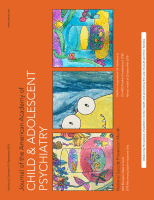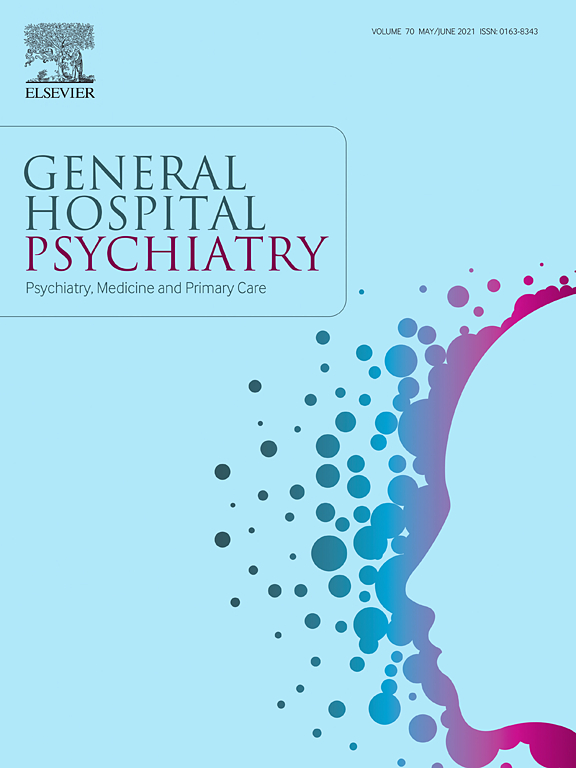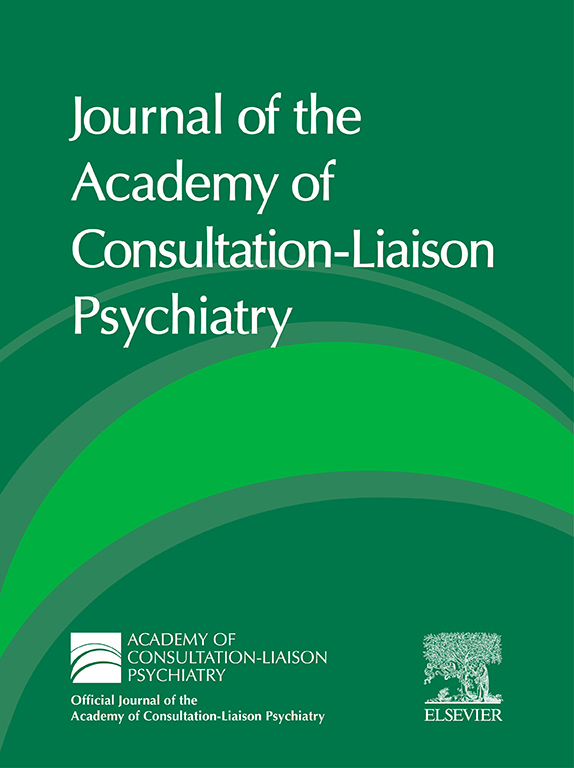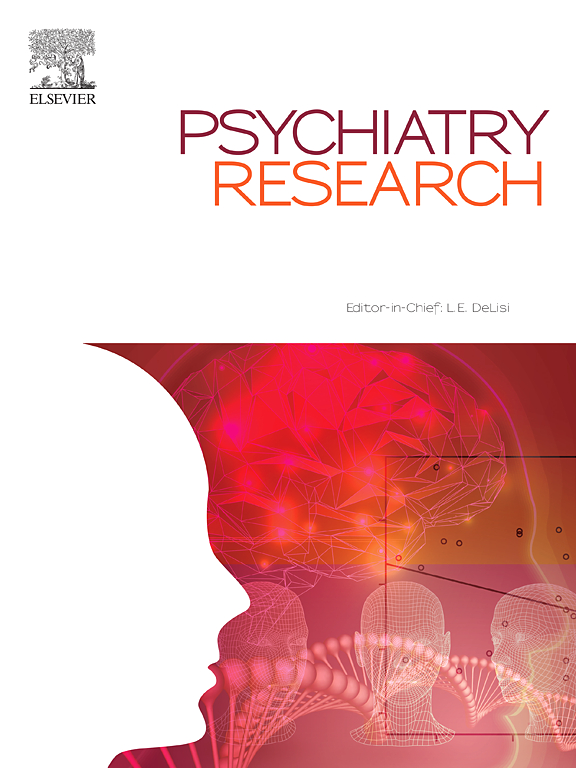IN THIS ISSUE: FACLP Awards | Webb Fellowship Awards | CLP 2024 Posters | BOPs | What’s on the Web | A&E Abstracts

Authors: Stacy Person, MD, FAAP, et al.
Abstract: Little is known about factors associated with discharge against medical advice (DAMA) in adolescent acute care hospitalization for suicidal ideation and suicide attempt.
This study seeks to determine whether socioeconomic factors or hospital characteristics are associated with DAMA in this population, and whether the increase in acute care hospitalizations for US adolescents with suicide ideation/attempts has led to a rise in DAMA.
Psychiatric hospitalization for suicidal ideation and suicide attempt has been fueled by a sharp increase in the prevalence of suicide ideation over the last 15 years, with American Indian/Alaska Native and non-Hispanic Black female patients having the largest rate increases.
More recently, an insufficient increase in inpatient psychiatric beds has led to a growing proportion of pediatric mental health care occurring in an acute care setting, say the authors. Most patients are placed on a medical service for boarding until possible transfer to inpatient psychiatric facilities.
Prolonged length-of-stays for this population ultimately leads to one of three discharges: most are discharged home with outpatient psychotherapy; the rest are transferred to psychiatric facilities or another acute care facility, or are discharged against medical advice.
“Despite the increasing prevalence of suicide ideation in US adolescents, mental health care treatment use has surprisingly remained incredibly low across all racial/ethnic groups,” say the authors. “However, a deeper look into the use rates shows an interesting trend.” Since 2005, research has shown that racial/minorities, other than Hispanic patients, are less likely to receive outpatient mental health care compared to White patients. “One study showed that this disparity was particularly the case when suicide ideation symptoms were less severe and early intervention could be most effective.”
The gap in treatment rates is believed to be due, in part, to structural/systemic barriers, such as cost of care, insurance status, location of care, and decreased availability of care due to workforce shortages. “Because of these barriers, racial/ethnic minorities have no other recourse but to be admitted to an acute care hospital or psychiatric facility when suicide ideation is identified and action is taken, or when symptoms are severe (i.e: non-fatal suicide attempts).
Importance: Adolescent suicide has become a significant public health problem in the US. Suicide rates in 10 to 19-year-olds increased by 56% between 2007 and 2016. Intentional self-harm/suicide was the second leading cause of death for 10 to 14 year-olds and 15 to 19 year-olds during 2019.
Availability: Published by Journal of the American Academy of Child & Adolescent Psychiatry

Authors: Lindsay Lebin, MD, et al.
Abstract: Authors found that:
Perinatal mental and anxiety disorders (PMADs) contribute to adverse health outcomes, though they are underrecognized and undertreated, say the authors. Yet inpatient obstetric settings represent a unique opportunity for behavioral health engagement, including screening, brief treatment, and referrals for outpatient care.
The proactive C-L model has proven effective in general hospital settings but is not well-studied in obstetric settings. This study describes the implementation and evaluation of a proactive C-L model in an inpatient obstetric unit within a tertiary medical center.
The study shows that 1,589 initial consults were conducted by the multidisciplinary team, yielding a consult rate of 21.7%. The majority (94 %) were completed by a social worker or psychologist, with most patients identified for consultation at multidisciplinary rounds (60.7 %). The most common indications for consultation with a psychiatrist included medication management, history of bipolar disorder, and history of anxiety. All invited staff and providers participated in the model.
“A proactive C-L model implemented in an inpatient obstetric unit led to a higher consult rate (21.7%) than is observed with traditional C-L services,” say the authors. “A multidisciplinary proactive C-L model shows promise in identifying people at-risk for PMADs and providing targeted interventions to prevent PMADs and treat those with active symptoms.”
The authors add: “Innovative approaches to behavioral health care delivery are urgently needed to address and prevent PMADs in the perinatal population. The proactive C-L model, which can improve identification of psychiatric needs in non-perinatal populations, shows early promise in optimizing the impact of a multidisciplinary team in inpatient obstetric settings. The large number of consults completed and high consult rate observed in this project highlight the potential large-scale impact of this model.”
Importance: PMADs, defined as mood or anxiety disorders occurring during pregnancy and the first year postpartum, are a leading contributor to maternal morbidity and mortality. Affecting 10–20% of people, PMADs are associated with adverse obstetric, fetal, and neurodevelopmental outcomes and contribute to increased risk of maternal substance use and suicide.
Given the profound negative effects of PMADs, the US Preventive Services Taskforce recommends clinicians assume a preventive approach and refer all patients at increased risk for depression to counseling interventions. Interdisciplinary, integrated behavioral health models show promise in improving screening, care engagement, and treatment initiation in the perinatal population.
Whereas most integrated approaches to perinatal mental healthcare focus on implementation in outpatient settings, inpatient obstetric settings offer unique advantages for implementation. Inpatient settings can facilitate behavioral health engagement for patients with limited perinatal care, rapid identification of severe PMADs such as postpartum psychosis, and early psychological support for patients who experience adverse events during inpatient hospitalization, such as birth trauma or fetal loss.
Availability: Published by General Hospital Psychiatry

Authors: Mark Oldham, MD, FACLP; Patrick Triplett, MD; Hochang Lee, MD, FACLP.
Abstract: This recent commentary compares the model of Proactive Integrated C-L Psychiatry (PICLP), as implemented in the UK-based HOME Study, with Proactive C-L Psychiatry versions commonly practiced in the US.
The HOME Study, and published here in The Lancet Psychiatry, is the largest randomized clinical trial in the field of C-L Psychiatry to date. “It was truly ambitious in scope, and its successful conduct is a testament to the investigators’ extraordinary investment in improving hospital-based mental health care for inpatients around the globe,” say the commentary authors.
Yet, they say, there are key distinctions: PICLP as implemented in the HOME Study includes a focus on older adults with “biopsychosocial complexity” rather than a focus on high mental health acuity; a direct assessment of all participants by a C-L psychiatrist rather than incorporating clinical information as part of a screening process; the unique inclusion of an occupational therapist as a member of the PICLP team; and patient-level randomization as opposed to unit-based approaches as commonly practiced in the US.
The authors also consider “several characteristics of the HOME Study sample relevant to its generalizability. These include an average age of 82 years, very limited ethnic and racial diversity, and a high prevalence of both cognitive and functional impairment.”
And they review how study methodology informs study interpretation. “These include early trial termination due to COVID, which limits power to detect a one-day reduction in hospital stay, a mean 3.5-day delay from hospital admission to study enrolment, and the exclusion of patients who had already received a psychiatric consultation, which likely reduced the acuity of mental health issues addressed.”
Although the primary HOME Study outcome [a half-day reduction in length of stay] was, as the study’s researchers acknowledged, statistically insignificant, “even a half-day reduction, if real, would be momentous,” say the commentary authors.
A growing body of evidence, say the authors, has found that the commonly adopted model of Proactive C-L Psychiatry in the US is a financially viable means of improving and expanding access to mental health care among medical-surgical inpatients. “Across inpatient settings, Proactive C-L Psychiatry has been shown to improve a variety of metrics, including length of stay, staff satisfaction, and time to consultation.”
They add: “PICLP, as studied in this [Home Study] trial, is an offshoot of the model of Proactive C-L Psychiatry as developed and practiced in the US. Rather than focusing chiefly on meeting mental health needs, PICLP sought to help wards provide biopsychosocial care for older adult patients with complex problems, in many ways as an inpatient corollary to outpatient models of collaborative care.”
Of the distinctions between PICLP and the US commonly used Proactive C-L Psychiatry model, “perhaps the one that stands out most is that a psychiatrist personally evaluated every patient randomized to the PICLP arm of the HOME Study. One wonders what proportion of these patients had an indication for a psychiatric evaluation or would have screened ‘positive’ with proactive screening (i.e., indicating a potentially active psychiatric issue) as is generally performed in Proactive C-L Psychiatry. Across the US, C-L psychiatrists all but uniformly serve as consultants, providing recommendations to primary practitioners or medical-surgical teams rather than directly to patients as one might in a co-management model.
“It would be hard to overemphasize the importance of screening, as it is impracticable for a psychiatrist or, specifically as in this study, a C-L psychiatrist, to complete a biopsychosocial assessment on every patient admitted to every medical unit. Whereas this Cadillac approach can provide insights about the true scope of mental health issues across the study sample, it does not reflect clinical practice and sacrifices efficiency for the sake of comprehensiveness. We suspect that optimized approaches of screening for mental health issues, by way of direct clinical contact with primary services or as aided by electronic medical records, to be a much more feasible and scalable approach across a broad healthcare landscape.”
Importance: As the authors say, a growing body of evidence has found that the Proactive C-L Psychiatry model commonly adopted in the US is a financially viable means of improving and expanding access to mental health care, improving metrics including length of stay, staff satisfaction, and time to consultation. Results from the HOME Study may not generalize to many US proactive psychiatry services given the differences in model implementation.
Availability: Pre-publication in the Journal of the Academy of Consultation-Liaison Psychiatry (JACLP).

Authors: Nisha Jagannathan, et al.
Abstract: Obsessive-compulsive symptoms (OCS) in adolescents display three trajectories over time: high-but-remitting; moderate-but-escalating; and low-and-stable.
The study shows that younger female adolescents are more likely to show moderate-but-escalating symptoms; anxiety sensitivity increases likelihood of moderate-but-escalating symptoms; distress tolerance decreases likelihood of moderate-but-escalating symptoms.
OCS increase with age during childhood and adolescence, and subthreshold OCS in childhood is associated with a higher probability of obsessive-compulsive disorder (OCD) diagnosis in adulthood. Additionally, average age of onset for OCD is in adolescence, with the majority of OCD cases emerging by early adulthood. Despite these trends, the specific course of OCS development in adolescence is relatively unknown.
To this end, the study used latent growth mixture modeling and a diverse community sample of 3,335 high schoolers to identify and characterize growth trajectories of OCS across middle to late adolescence. Results also highlighted age, gender, anxiety sensitivity, and distress tolerance as significant predictors.
Importance: Up to 4% of US children and adolescents have OCS and approximately two-thirds of OCD cases emerge by early adulthood (approximately 22 years old). This study is the first to examine OCS trajectories in adolescence using latent growth mixture modelling.
Availability: Published by Psychiatry Research.

Authors: Eliane Grace, MD
Abstract: Poor oral intake (POI) among medical-surgical inpatients can cause malnutrition and delay recovery due to medical consequences and the need for more invasive nutritional support. Many psychiatric conditions can cause POI; however, the role that psychiatric conditions play in POI has received limited attention to date, say the authors.
This review aggregates available information on POI due to psychiatric conditions and provides a framework for the clinical approach to these conditions in hospitalized adult patients.
The authors found that clinical management of POI varies based on cause. For example, psychostimulants can cause POI due to inappetence; however, they can treat POI due to abulia by improving motivation. “The fact that such a broad range of psychiatric conditions can cause POI calls for a systematic clinical approach that considers the categories of potential causes,” say the authors.
Importance: An estimated 39-45% of US hospital inpatients have malnutrition, and a key contributor to this is POI, a term used to describe inadequate intake for the patient’s needs and clinical context. POI can lead to malnutrition, delay recovery, and result in medical consequences including impaired wound healing, falls due to orthostatic hypotension, or delirium due to electrolyte abnormalities, dehydration, or vitamin deficiencies. POI may require nutritional support, including a nasogastric tube, percutaneous endoscopic gastrostomy tube, or total parenteral nutrition. These interventions, in turn, are associated with additional risks. Patients with POI are also at risk for refeeding syndrome when nutrition is resumed.
Whereas POI can be caused by medical conditions and interventions, it can also be caused by several psychiatric conditions and psychological factors. These conditions range widely, including primary psychiatric disorders like anorexia nervosa, comorbid psychological factors affecting other medical conditions like demoralization, and conditions that develop in response to medical care like conditioned nausea and vomiting after chemotherapy.
Availability: Pre-publication in the Journal of the Academy of Consultation-Liaison Psychiatry (JACLP).

You must be logged in to view this page
Please login below or register as a new user
Not an ACLP member? View Journal contents and abstracts here.
The Academy of Consultation-Liaison Psychiatry is a professional organization of physicians who provide psychiatric care to people with coexisting psychiatric and medical illnesses, both in hospitals and in primary care. Our specialty is called consultation-liaison psychiatry because we consult with patients and liaise with their other clinicians about their care.
With nearly 2,000 members, the Academy is the voice of consultation-liaison psychiatry in the US with international reach.
Please browse our website, read our journal, Psychosomatics, and come to our annual meeting which is in November each year. In 2020 it will be a virtual event – see www.CLP2020.org for more details.
If you are a C-L Psychiatrist and not yet a member please join our great organization and welcoming, inclusive community. Please visit this page for details on joining.
Michael Sharpe, MA, MD, FACLP
ACLP President
